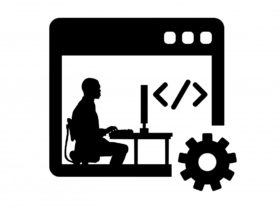Today, we’re going to talk about the concept of workforce management in contact centers. And the first thing we’re going to do is define exactly what workforce management is in layman’s terms.
What is Workforce Management?
In essence, what we’re trying to do is ensure that we have the right number of agents with the right skills, in the right place, at the right time. And what this means is that when your customers are calling you, emailing you, trying to communicate with you through web chat, that you will always have agents that can carry out those interactions. It also means that you’re not paying your agents to sit in front of a screen when there’s no customers calling.
Defining the Intricacies of Workforce Management
Now let’s dive deeper and have a look at the intricacies of workforce management.
Firstly, it can be characterized as an operating philosophy. What we mean when we say that is that it’s not something we can just put under a desk and switch on, we have to put in the time and the effort, and look after it to get the most out of it.
In hindsight, it’s different for every contact center. Customer arrival profiles differ and agent contracts differ. It’s something that can always be improved on. So be that changing slightly how you schedule or slightly how you forecast to improve your accuracy.
You can always get something better out of workforce management, it will reward you based on the effort you put in. And it’s something that needs to be nurtured and looked after to get the most out of it.
Finally, if we look at it as some automation and/or self-sustaining principle, we’re going to be in big trouble, as it’s not something we just switch on and leave to do its thing. Typically, a contact center will need to have a full-time resource planner to get the most out of the solution.
Knowing Its Place in an Organization
If we have a look at how a workforce management solution looks like as a puzzle pyramid, where we’ve got three pieces of differing sizes.
Technology
If we start at the bottom left, we’re going to start with technology. And this would be your telephone platform, your email handle, your web chat handler, what the customer interaction will feed into. And you can see this is the smallest part of the puzzle.
Software
The next part is the actual workforce management solution: the software. This is where all of the interaction forecasting would be done, where the schedules are created, where all the agent information is held, things like that.
People
And the final piece of the puzzle is the actual people. And when we say people, we’re talking about the customers, we’re talking about the agents, the team leaders, the resource planners, the administrators, basically all people who’ll benefit from workforce management. And it’s the change in process that surrounds all the people, which is the major part in any workforce management project.
And how does that actually benefit the customers and the agents?
Understanding the Benefits to Customers and Employees
So if we think about it as a balancing act, an equilibrium of some sort, we can see that both elements are directly related to each other. If we give agents weird and wonderful shifts, and not particularly good shift patterns, it might mean that we can handle our customer arrival patterns much better. A downside though is that our staff won’t be particularly happy, attrition rates might rise, and we’ll have to recruit and/or train–which has a cost of business.
On the other hand, if we give agents exactly what they want, it might mean that we’re not servicing our customers particularly well because we’re not there to pick up the phone. So there’s a real balancing act between these two and finding the happy medium, which means we have happy customers and also happy agents or employees. Ultimately, what this relates to is the bottom line which is the profitability of the business.
In Summary
The four “rights” are how we would define workforce management: the right people with the right skills and the right place at the right time. Workforce management also needs to be looked after, as it’s an operating philosophy and not something you just switch on under a desk.
The people play the biggest part in any workforce management project or solution. And that’s not just customers, that’s agents, team leaders, planners, etc., What we’re trying to do is balance customer satisfaction with agent satisfaction.
At the end of the day, this’ll have a great impact on the organization’s bottom line, which is–of course–overall profitability.
- What Is Agile Methodology In Software Development - May 15, 2024
- What Is Coding In Software Engineering - May 8, 2024
- Best Computer Cleanup Software - April 11, 2024











Leave a Reply